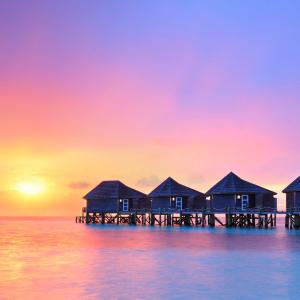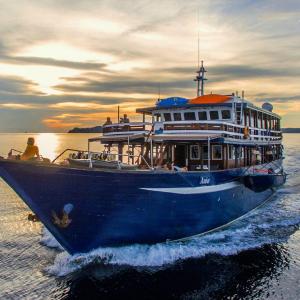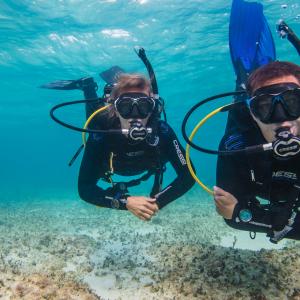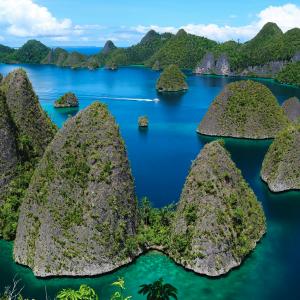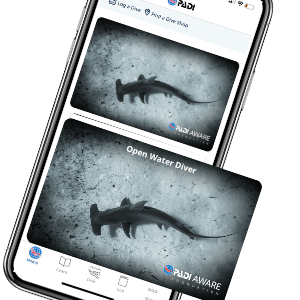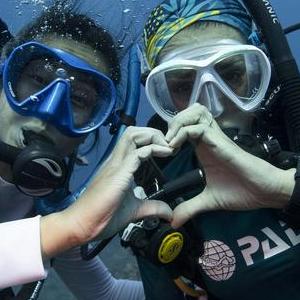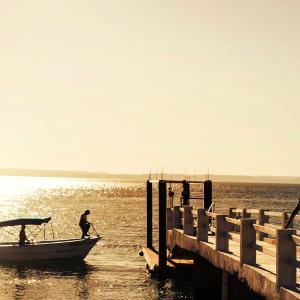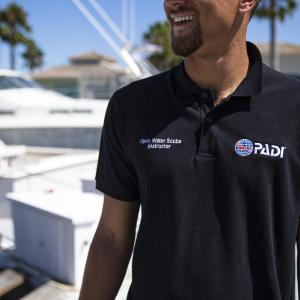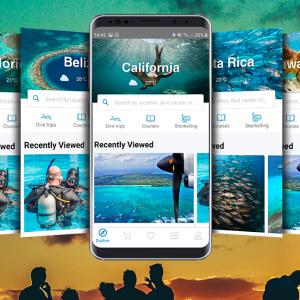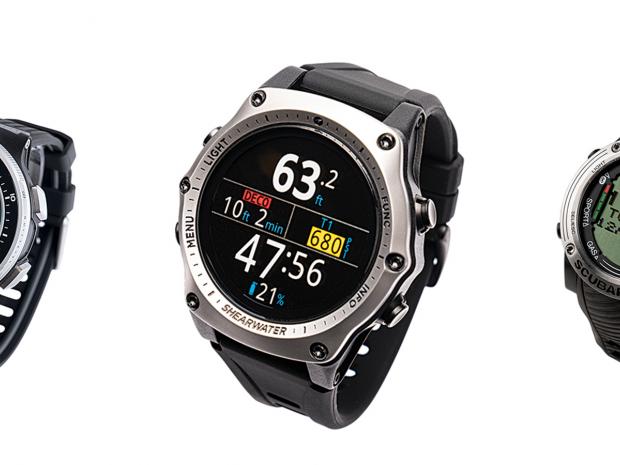This desert delight has earned its place as perhaps the divest island in the world.
It’s hard to think of a place that makes the dive life look better than Bonaire. Pick almost any section of the island and there’s somewhere to submerge — almost all of it accessible 24/7, thanks to the island’s place as the world’s premier shore-diving location. Scooting around between dives in your rental truck, getting to know the donkeys, flamingos, cactuses and the overall Wild West landscape will make you feel like a teenager again. And it’s all long-protected by one of the strongest traditions of environmental conservation in the Caribbean.
Bonaire is a favorite among divers — the island took home the following 7 accolades in the 2020 Scuba Diving Magazine’s Readers Choice Awards:
First Place (Caribbean & Atlantic)
- Shore Diving
- Photography
- Macro Photography
- Snorkeling
- Health of Marine Environment
Second Place (Caribbean & Atlantic)
- Beginner Diving
- Advanced Diving
BEGINNERS
1. Join in the Crowd
Everybody’s a diver here, or so it can seem to the newcomer, which makes Bonaire a great place to get your fins wet and be inducted into the tribe — there are many, many dive aunties and uncles waiting to welcome and assist you.
2. You Can Do It
Bonaire attracts loads of advanced and tec divers, so it’s easy to overlook the fact that most of the island’s nearly 90 named dive sites are suitable for all levels of divers, including pretty much all of the sites off Klein Bonaire, a 2-square-mile island sheltered in the crescent of Bonaire’s western shore, reachable only by boat or kayak.
3. We Won't Tell

It’s a bit of a secret, but the fact remains: the easiest way to do many of the best sites on Bonaire — shore-diving capital of the world — is … by boat. It’s worth considering for anybody with physical issues or anyone toting an especially delicate — or , large, or expensive, — camera rig.
4. Backyard Bliss
House reefs aren’t unique to Bonaire, but you have to go very far indeed to find a stretch nicer than those that wend their way along Bonaire’s west coast, from the house reef at Captain Don’s Habitat to Plaza Resort’s Eighteen Palms dive site. House reefs can be great places to build confidence, as you’re never far from a dive shop and somebody who can answer your questions. (Buddy Reef at Buddy Dive Resort - which won three 2020 Readers Choice Awards - also offers a close-up look at a coral-restoration project now celebrating its fifth year.)
5. Something for Everyone
Bonaire boasts over 60 marked shore dives — this on an island of only a little more than 100 square miles Entry points range in difficulty from easy Salt Pier to more-rugged — but worth it — entries like La Dania’s Leap in the north.
6. Follow the Yellow Brick Road
It’s easy to find the entrances to Bonaire’s many shore dives, even if you’ve never been to the island before. Each is marked with a good-size stone painted yellow, with the dive-site name printed in black — a uniquely Bonairean system that makes navigation a cinch.
7. Drive and Dive
It’s not just a slogan on Bonaire; it’s the most common way of diving. Many resort packages include a vehicle — make sure yours is a truck so you can rough it in spectacular Washington Slagbaai National Park in the far north — which makes it easy to dive 24/7. And, yes, drive-through tank pickup is a real thing.
8. Do-It-Yourself Diving
A dive vacation with NO schedule unless you want one, and as much or as little diving as you like. Think about that a sec. (Don’t fancy all that hauling your stuff about? Most of Bonaire’s shore dives can be reached by boat too.)
9. Walk on the Wild Side
Want to kick it up a notch? Head to Bonaire’s woolly east coast. Only advanced divers and strong swimmers need apply for Cai and White Hole, but here, Boka Spelonk and other wild-side sites are where you’ll find big pelagics off Bonaire — if anywhere. Go with a guide.
CONSERVATION
10. Leading the Way
The island of Bonaire has long been a leader in nature conservation and ecological responsibility. Its Stichting Nationale Parken foundation — better known as STINAPA — was created in 1962 for the purpose of actively protecting nature on the island.
11. First of Its Kind

The Bonaire National Marine Park — which was established in 1979 and consists of the entire coastline from the high-water mark to a depth of 200 feet (plus a large mangrove forest in Lac Bay, on the island’s wilder east side) — was the first of its kind in the Caribbean.
12. More Moorings
While it’s perhaps best known for its unlimited shore diving, Bonaire has more than 70 moored dive sites. The island was an early adopter of the practice; anchoring is not allowed in the marine park.
13. By the Numbers
Thanks to decades of protection, Bonaire’s reefs are host to an incredible number of species. More than 450 kinds of fish make their home here; Bari Reef alone has more than 300 species, as documented by Reef Environmental Education Foundation.
14. Heeeere, fishy, fishy...

According to REEF founder Ned DeLoach, co-author of the essential REEF Fish ID and Behavior series, Bonaire’s stewardship has helped to make it home to eight of the 10 fishiest reefs in the Tropical Western Atlantic/Caribbean region. Buddy Dive Resort Bonaire hosts DeLoach and his wife, videographer Anna, during its Coral Lovers month in June; learn more at buddydive.com.
FREEDIVING
15. Take the Plunge
Bonaire Deepsea Challenge, an official AIDA event (in English, the International Association for Development of Apnea) draws competitive freedivers from Spain, the U.S., Russia, the U.K., the Netherlands, Honduras, Curaçao, Brazil, Chile, France, Venezuela, Puerto Rico and more.
16. A Different Way to Dive
Deepsea Freediving School — run by 12-time world-record- holder Carlos Coste — has hosted more than a dozen national, continental, world and Guinness record-setting events. Flow Bonaire offers freediving instruction, plus mountain biking, photography and other outdoor adventures.
MACRO
17. Toto, are we in Indo?
Bonaire can surprise newcomers with the number of bucket-list macro critters you can spy here on many sites, from frogfish to seahorses, interesting blennies and gobies, sea slugs and more.
18. Elbow Room
Bonaire is a macro shooter’s dream not just because of the number of species to stalk, but because the shore-diving culture means divers are more spread out. You’re not consigned to being trampled by a boat full of non-photographers who don’t get your joy in an hours long stationary dive.
19. Who Needs a Backbone?
You won’t find Nemo here, but you can spot giant anemones — a non-stinging variety that comes in purple, pink, green and yellow — and other invertebrates, including many types of shrimp, worms and star coral. Terrestrial invertebrates include monarch butterflies, especially common in Washington Slagbaai National Park.
20. Little Darlings
Sometimes macro is just another word for “hey, baby.” Bonaire’s mangrove forests and their sea-grass beds are nurseries, a hidden world filled with juvenile queen conchs, rays, lobsters, seahorses and more. Multiple operators offer naturalist-guided mangrove kayak-and-snorkel tours.
21. Gonna Fly Now
Tiny isn’t just for undersea critters on Bonaire — the island also is home to several kinds of hummingbirds, most commonly the blue-tailed emerald and larger ruby-topaz varieties. (Bonaire is an official stop on the Caribbean Birding Trail.)

Start your adventure today.

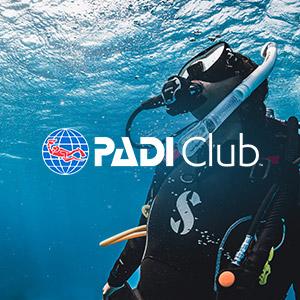
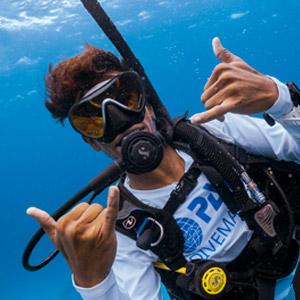

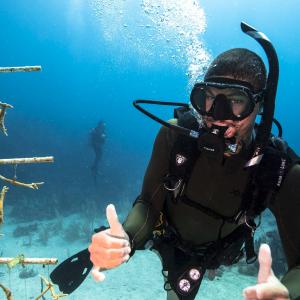
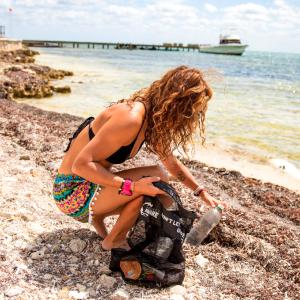
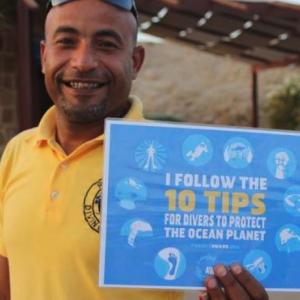
 Afval in zee
Afval in zee
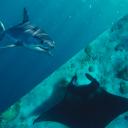 Bescherming van haaien en roggen
Bescherming van haaien en roggen
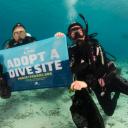 Adopteer een duikstek
Adopteer een duikstek
